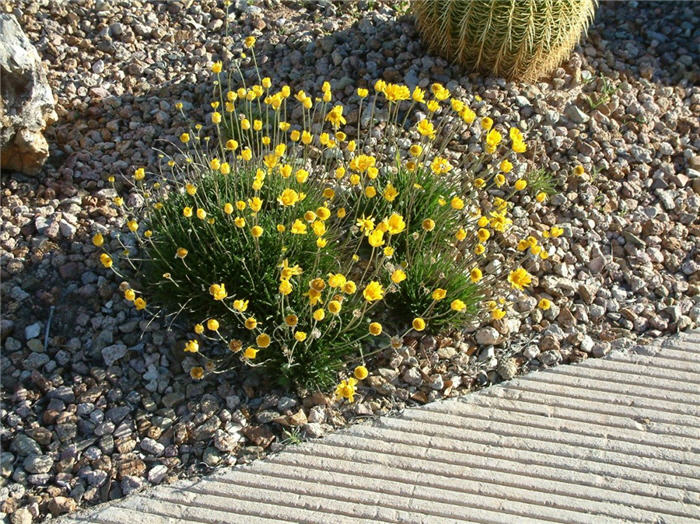| Botanical Name: Hymenoxys acaulis | |
| Common Name: Sundancer Daisy |

-
Anatomy
-
Culture
-
Design
Plant Type
Perennial
Height Range
Under 1', 1-3'
Flower Color
Gold
Flower Season
Spring, Summer
Leaf Color
Green
Bark Color
n/a
Fruit Color
n/a
Fruit Season
n/a
Sun
Full
Water
Very Low, Low
Growth Rate
Moderate
Soil Type
Sandy, Rocky
Soil Condition
Average, Poor, Well-drained, Dry
Soil pH
Neutral, Basic
Adverse Factors
Attracts Bees
Design Styles
English Cottage, Meadow, Mediterranean, Ranch, Spanish
Accenting Features
Showy Flowers
Seasonal Interest
Spring, Summer
Location Uses
Entry, Perennial Border, Foundation, Patio, Parking Lot, Raised Planter, Walkways
Special Uses
Cut Flowers, Small Spaces
Attracts Wildlife
Butterflies
Information by: Stephanie Duer
Photographer: Mountain States Nursery
Photographer: Mountain States Nursery
-
Description
-
Notes
Sundancer daisy is a lovely little perennial to add to a sunny border, a rock garden, parkstrip. It has a very compact, tidy habit, though its grass-like foliage gives it an airy, delicate appearance. Bright yellow daisy-like flowers bloom late spring thru to fall. Generally under 12 to 15 inches tall and wide. Attracts native bees, honeybees, and butterflies. Sundancers are planted in the Washington Square Demonstration Garden.
Grow in well drained soil in full sun. It is native to areas with poor, rocky, even barren soil. Prefers dry soils. Deadheading isn't necessary, but if you'd prefer a tidier appearance, it will do no harm. Unbothered by deer or rabbit. A Utah native.